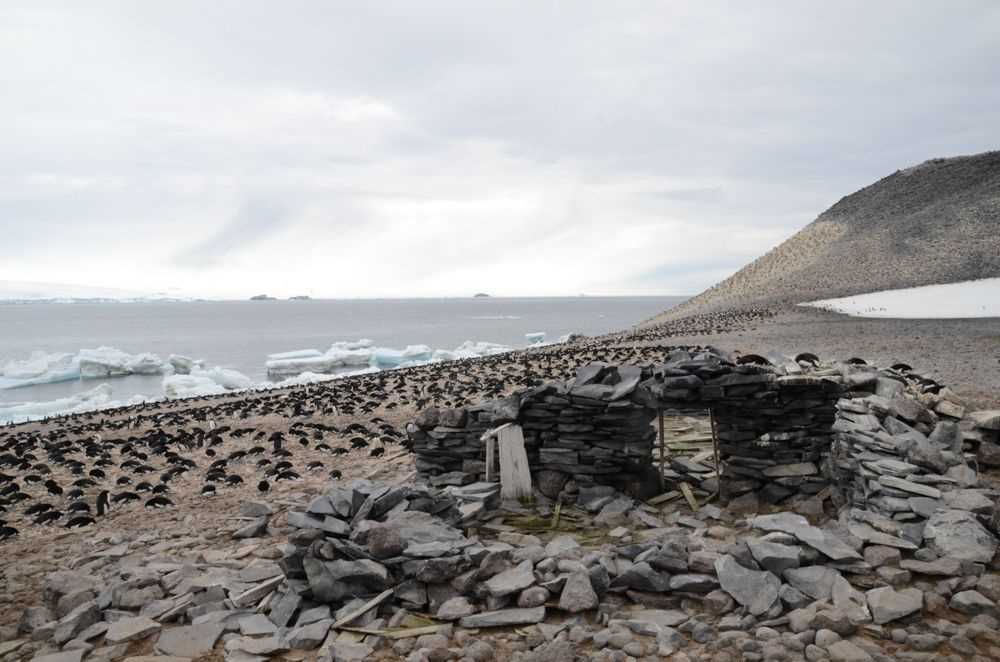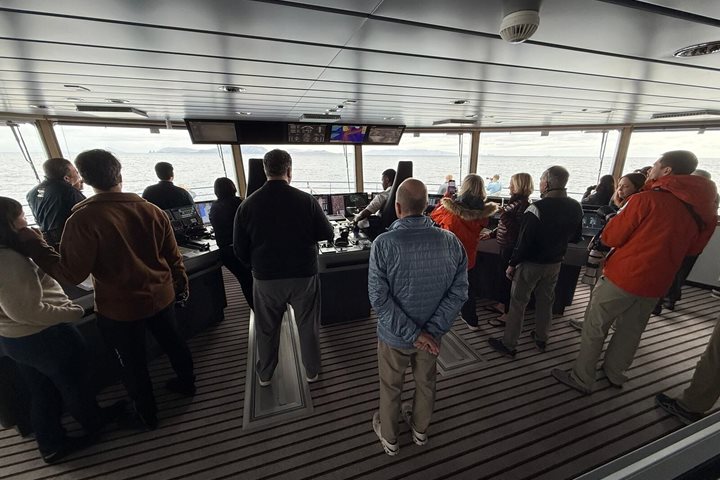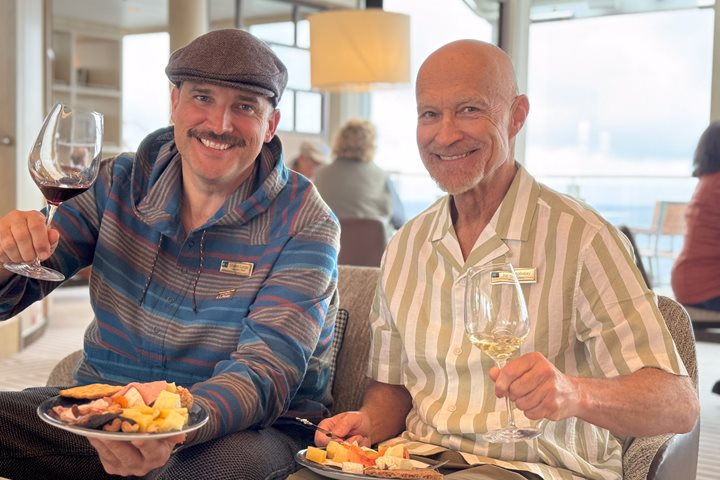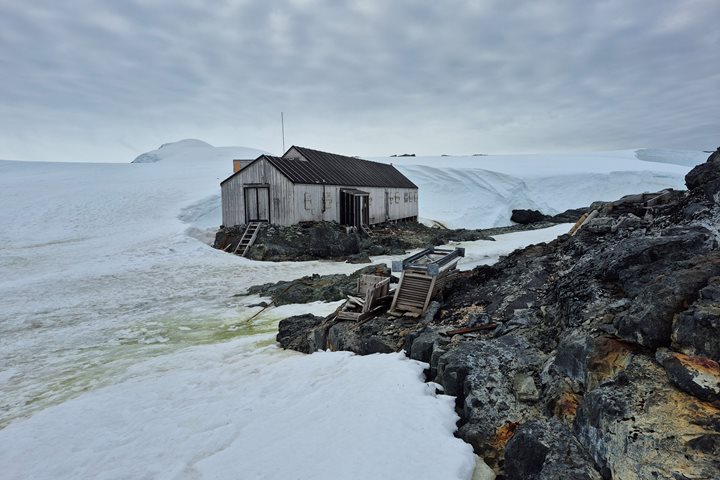By breakfast time this morning we were practically face-to-face with Adélie penguins. Their colony rose up in front of the bow on the steep shores of Paulet Island where we spent the morning.
This island sits at the southern point of Dundee Island in the Weddell Sea. There is more sea ice on this eastern side of the peninsula, which means this can be a difficult place to land. Today we managed to negotiate the icebergs so that we could walk among thousands of breeding pairs of penguins. Those of us who hiked a little further also passed an Antarctic shag colony and watched, from above, as both kelp gulls and skuas soared above the penguins in search of a meal.
Paulet Island is also an important historic site. During the winter of 1903, the crew of the Antarctic, which had been supporting Otto Nordenskjold’s Swedish Antarctic Expedition, built a hut and spent the winter here after their ship sank 25 miles away. The foundation and some of the walls of this hut are still intact, even though they have become nesting sites for a few penguin pairs. Standing next to the hut you realize that these men had the same building materials the penguins do: rocks. They made do with a few provisions and whatever they could glean from the environment before being rescued the following summer.
Cruising the Weddell this afternoon we found our second emperor penguin amongst a group of Adélies on the sea ice. We rarely see these birds, and almost never more than one per voyage, so there was a big crowd out on deck to watch it swim, waddle, and tower over the other little brushtails beside it.
This evening we headed back north to leave the Weddell Sea and begin exploring the other side of the peninsula. Tabular bergs continue to amaze us with their unique shapes, and the light around sunset is simply spectacular.







